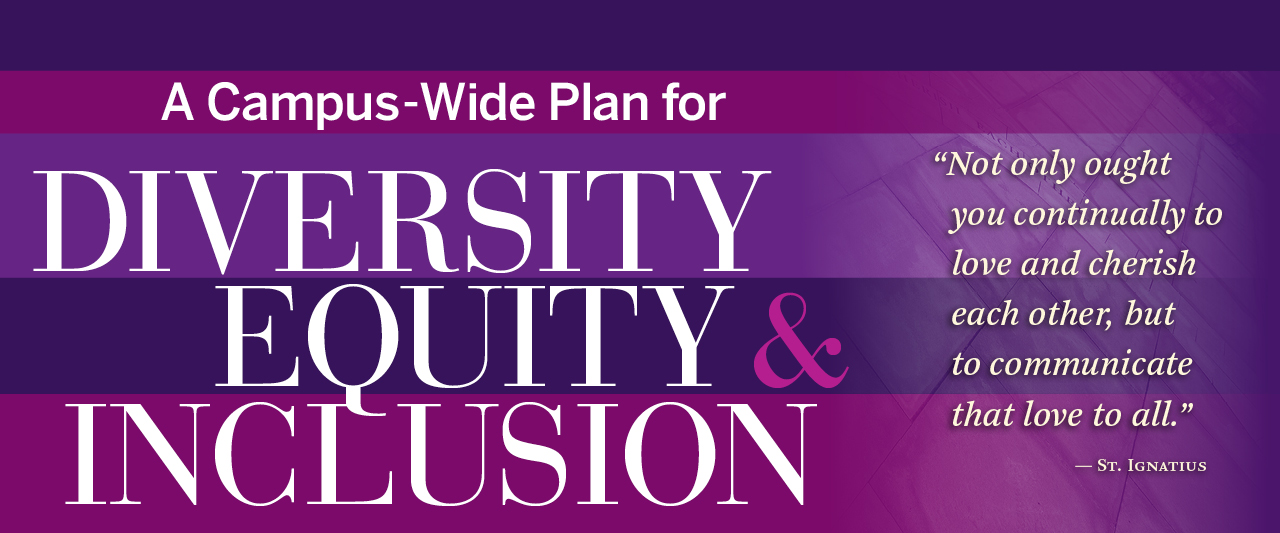The Need for Shared Principles for Diversity and Inclusion
The Team spent considerable time discussing the need for a definition, or defining components, of diversity and inclusion. One of the most frequently cited questions during the earlier institutional strategic planning feedback sessions on this topic was, what do we mean by diversity? How is it defined? What groups and issues are essential to address? How do we consider this issue, develop plans and programming, and support students and one other, from a uniquely Jesuit perspective?
There are many existing definitions to consider. Generally, diversity may be understood to include a range of human differences including but not limited to race, color, ethnicity, gender, gender identity, gender expression, language, sexual orientation, age, socioeconomic status, physical ability or attributes, religious or ethical values systems, national origin, family structure, political beliefs, and cultures. Diversity means more than just acknowledging and/or tolerating difference. Diversity is a set of conscious practices that seek to understand and appreciate the interdependence of humanity, cultures, and the natural environment. It encompasses other differences among people, including geographic differences and, importantly, diversity of thought and life experiences. An inclusive institution promotes and sustains a sense of belonging; it values and practices respect where all people are recognized for their inherent worth and dignity, talents, beliefs, backgrounds, and ways of living, and have an equal opportunity to belong, achieve, and contribute. Inclusion refers to a culture that connects each employee to the organization; encourages collaboration, flexibility, and fairness; and leverages diversity throughout the organization so that all employees are able to participate and contribute to their full potential. Some focus on categories of representational diversity that are considered protected classes under federal and state law. Others are broader, including social and geographic differences, and diversity of thought and life experience. Others also address the concept of inclusivity, which promotes and sustains a sense of belonging and respect for differences.
Recognizing that University functions, such as those supporting Title IX and other compliance obligations, may need to rely on specific legal definitions to do their work, Team discussion reinforced prior discussions by the UPC and other groups that a broader, common understanding of the multiple aspects of diversity is fundamental to our work. The Team recommends that one of the first actions undertaken to move this plan forward is forming a common understanding/definition of diversity and inclusion and developing of a statement of shared principles for diversity and inclusion for all members of our University community. Such a statement must consider and draw from the fundamental expectations for welcoming and supporting diversity that are inherent in our Catholic, Jesuit mission and tradition. Done well, it will articulate and guide a common understanding as to what is included in the scope of our shared work; clarify institutional commitment, expectations, and roles and responsibilities; and create a shared framework and baseline for evaluating and reporting our growth as an institution.
Although the Team’s focus remained on the two core elements named in the strategic plan goal – diversity and inclusion – during the course of our work and campus review of the draft plan, it became clear the plan must also address issues of equity, fundamental to expanding and sustaining our commitment. Several action items below address this topic, and it is expected that the plan will expand in this area over time. As the term “equity” is not included in the goal language of the strategic plan, it is recommended that campus leadership consider if it would be appropriate to include it.






